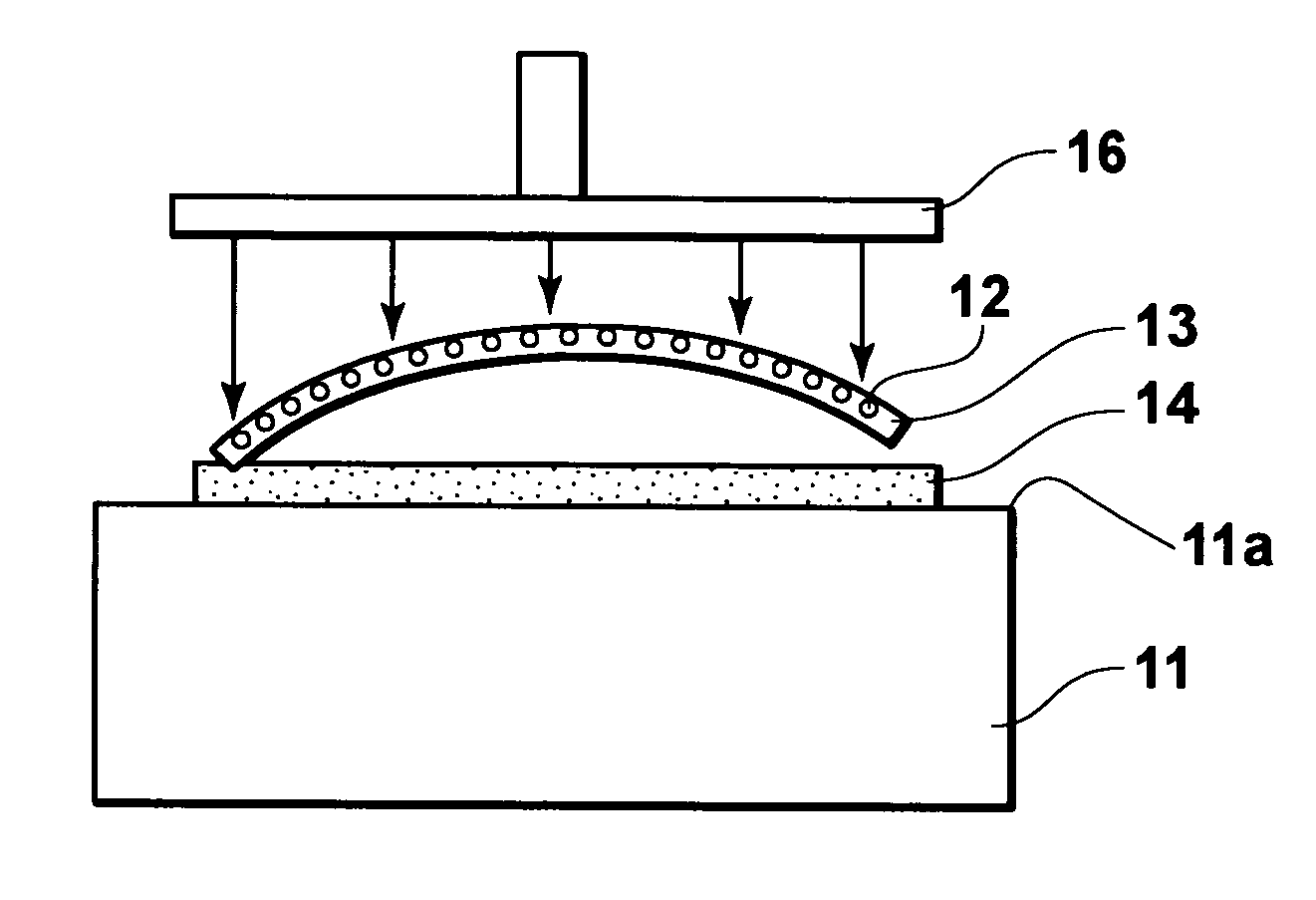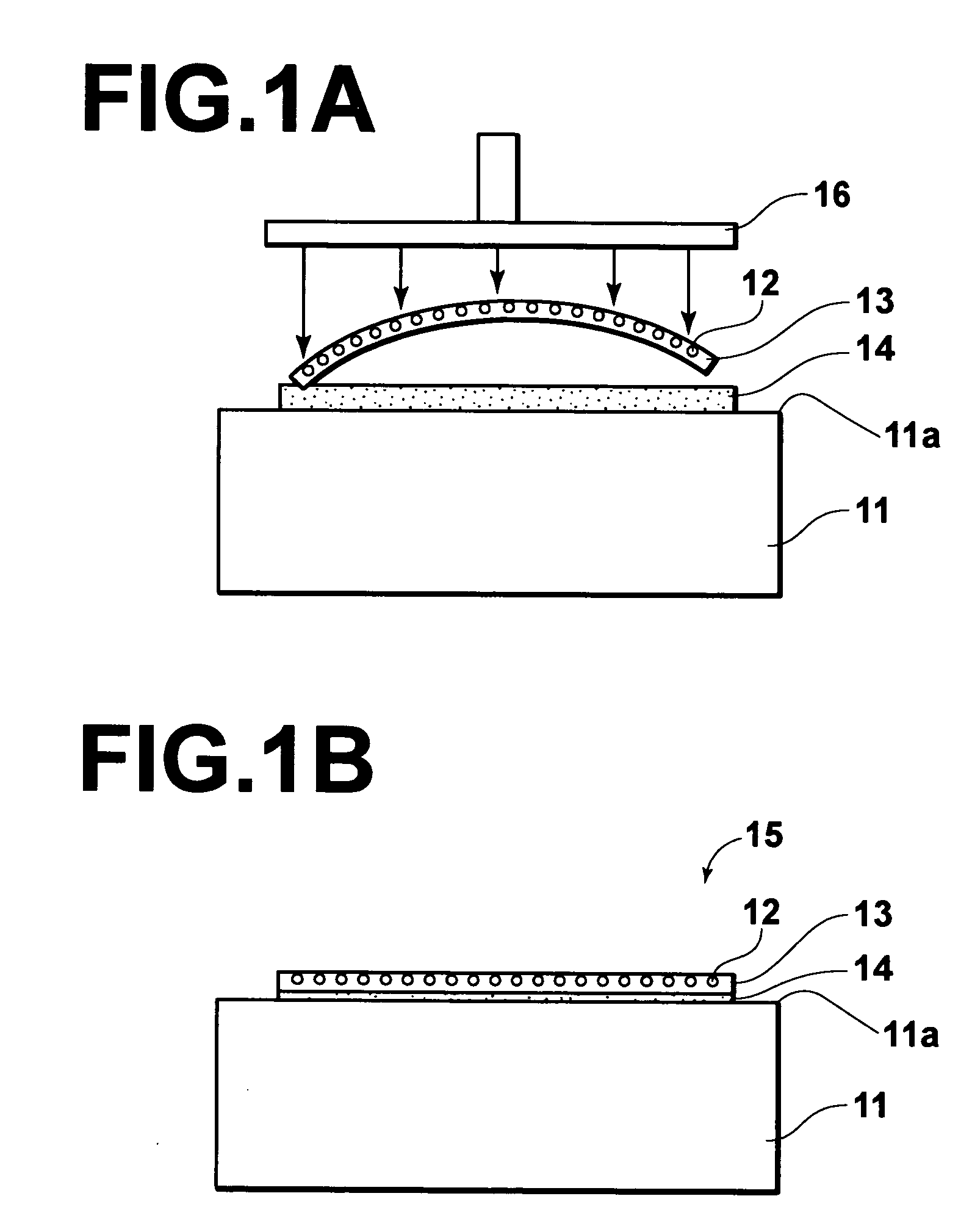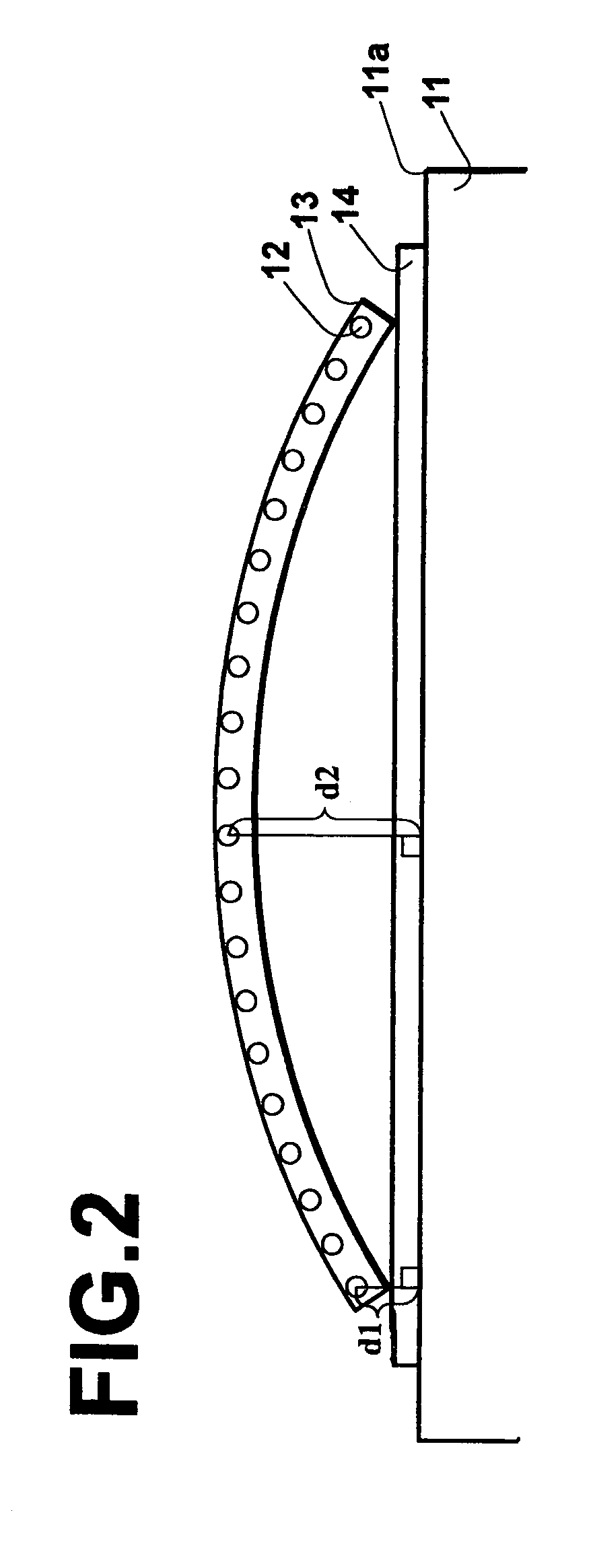Laser element, method of producing the laser element, and a laser module employing the laser element
a laser element and laser module technology, applied in the direction of semiconductor laser arrangement, semiconductor laser structure details, semiconductor lasers, etc., can solve the problems of high significant decrease in coupling efficiency, and inability to fix the nitride-based semiconductor laser bar to the heat sink, so as to facilitate the design and alignment of optical systems and manufacture of laser modules , the effect of increasing the coupling efficiency to the optical fiber
- Summary
- Abstract
- Description
- Claims
- Application Information
AI Technical Summary
Benefits of technology
Problems solved by technology
Method used
Image
Examples
first embodiment
[0039]A process for producing a laser element according to the first embodiment of the present invention is explained below. FIGS. 1A and 1B are cross-sectional views of initial and final stages of the process for producing the laser element according to the first embodiment.
[0040]As illustrated in FIG. 1A, an AuSn brazing material 14 in pellet form having a thickness of about 3 to 50 micrometers is placed on a flat surface 11a of a heat sink 11, which is made of copper and plated in such a manner that the outermost layer of the plating is gold and has a thickness of about 1 micrometer. Then, a nitride-based semiconductor laser bar 13 is fixed to the heat sink 11 by placing the nitride-based semiconductor laser bar 13 on the brazing material 14, and heating, melting, and then solidifying the brazing material 14 while pressing the nitride-based semiconductor laser bar 13 toward the heat sink 11 with a bonding collet 16, which is constituted by a flat plate corresponding to the shape ...
second embodiment
[0066]A laser module according to the second embodiment of the present invention, which uses the laser element according to the first embodiment of the present invention is explained below. FIG. 6 is a plan view illustrating an outline of the construction of the laser module according to the second embodiment of the present invention.
[0067]As illustrated in FIG. 6, the laser module according to the second embodiment comprises a laser element 15, an optical system, and a single multimode optical fiber 63. In the laser element 15, a nitride-based semiconductor laser bar 13 having twenty light-emission points and a length of 1 cm is fixed to a heat sink 11 made of copper with an AuSn brazing material, where the light-emission-point displacement is 0.2 micrometers. The optical system is constituted by a collimator-lens array 61 and a condensing lens 62.
[0068]Although the nitride-based semiconductor laser bar 13 emits twenty laser beams B1 through B20, in order to simplify the illustrati...
third embodiment
[0081]A process for producing a laser element according to the third embodiment of the present invention is explained below. FIGS. 8A and 8B are cross-sectional views of initial and final stages of the process for producing the laser element according to the third embodiment. In FIGS. 8A and 8B, elements which are equivalent to corresponding elements in FIGS. 1A and 1B bear the same references as the corresponding elements in FIGS. 1A and 1B.
[0082]As illustrated in FIG. 8A, an AuSn brazing material 14 having a thickness of about 3 to 50 micrometers is deposited by evaporation on a cylindrical surface 73a of a heat sink 73, which is made of copper and coated by evaporation with nickel, platinum, and gold films respectively having thicknesses of 0.1, 0.2, and 1 μm. Then, the nitride-based semiconductor laser bar 13 is fixed to the heat sink 73 by placing the nitride-based semiconductor laser bar 13 on the brazing material 14, and heating, melting, and then solidifying the brazing mate...
PUM
| Property | Measurement | Unit |
|---|---|---|
| radius | aaaaa | aaaaa |
| thickness | aaaaa | aaaaa |
| thickness | aaaaa | aaaaa |
Abstract
Description
Claims
Application Information
 Login to View More
Login to View More - R&D
- Intellectual Property
- Life Sciences
- Materials
- Tech Scout
- Unparalleled Data Quality
- Higher Quality Content
- 60% Fewer Hallucinations
Browse by: Latest US Patents, China's latest patents, Technical Efficacy Thesaurus, Application Domain, Technology Topic, Popular Technical Reports.
© 2025 PatSnap. All rights reserved.Legal|Privacy policy|Modern Slavery Act Transparency Statement|Sitemap|About US| Contact US: help@patsnap.com



